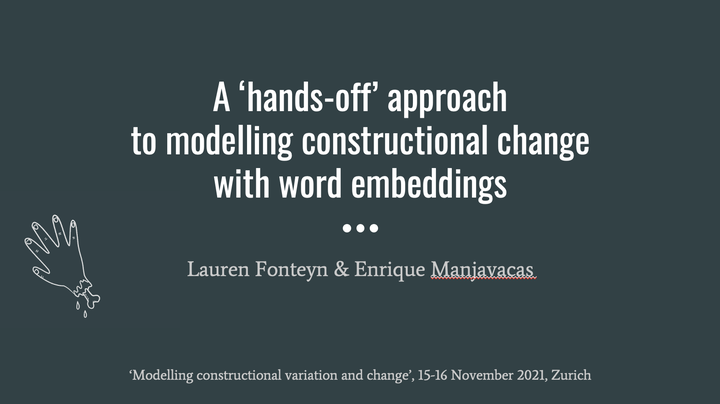 Image credit: MacBERTh team
Image credit: MacBERTh team
Abstract
Following the research design of Perek (2016, 2018), we deploy hierarchical clustering algorithms over distributed meaning representations (obtained through word2vec; Mikolov et al. 2013) in order to capture the evolution of the semantic space of verbs types that collocate with to death. We then describe the diachronic trends by means of a monotonic effects regression model, which helps us to provide an accurate picture of the underlying diachronic process. The methodology we outline may help tackle some common challenges in the use of functional-semantic vector representations to study similar cases of constructional change. The second aim of this talk is to pinpoint some (remaining) challenges for vector-based approaches to modelling constructional change. First, we briefly summarize what we consider to be the most important challenges for computational analyses of constructional change, including the open-ended question on how to strike the right balance between robustness and transparency, and between automation and manual/introspective correction. Finally, we highlight how the ‘lumped’ vector representations generated by type-based models may introduce problems into fully hands-off procedures, and introduce the token-based models we are currently developing as part of the MacBERTh infrastructure project.